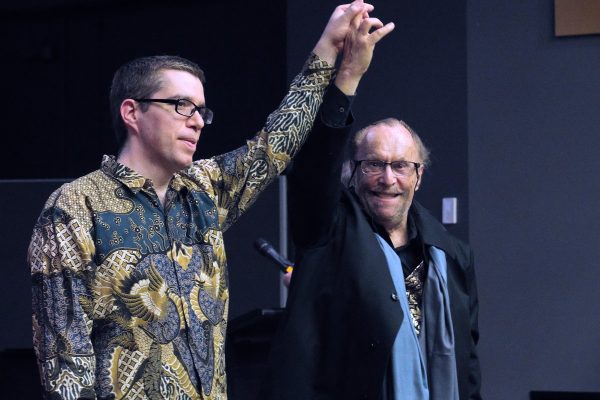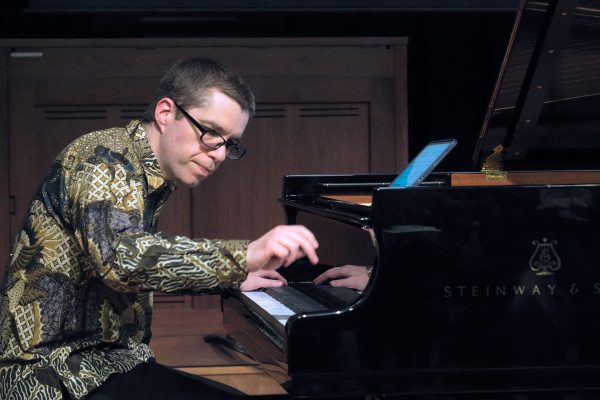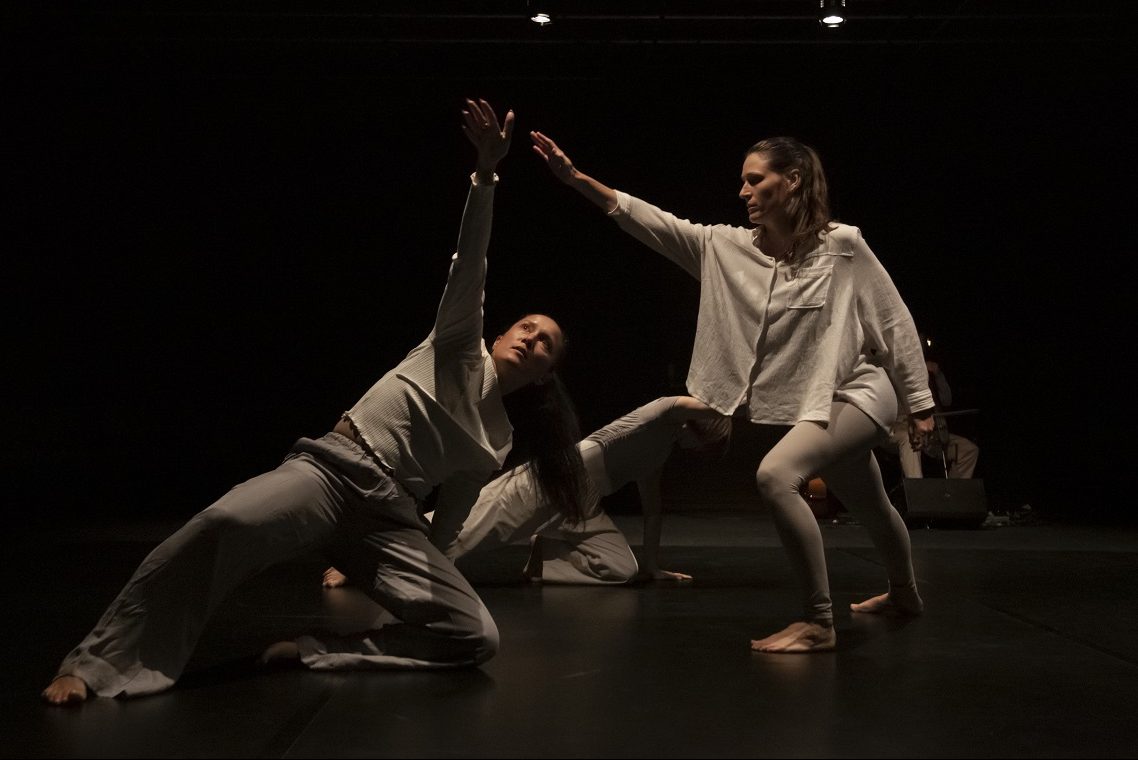
Music / “Apocryphon of Initiation” by Larry Sitsky, performed by Edward Neeman. ANU School of Music, September 21. Reviewed by HELEN MUSA.
EVERY so often, you get to see a performance that puts everything else in the shade.
It was so on Thursday night when Edward “Teddy” Neeman sat at the piano to perform Sitsky’s work, “Apocryphon of Initiation”.
Sitsky has long steeped himself in Egyptian mythology, but Neeman, in a few brief words, modestly disclaimed knowledge in this area, but was able to point us to the trajectory of the nine movements composed by Sitsky as a ritual initiation.
His performance had been preceded by the launch of Sitsky’s new book, “The Compleat Busoni’, Volume 1”, representing years of research into the music of Italian composer Ferruccio Busoni. This was introduced by music critic and academic Malcolm Gillies, who quoted a colleague to the effect that Sitsky was “The Compleat Musician.”
Admiringly, Gillies noted that Sitsky’s subtitle for “Apocryphon of Initiation” is “Concerto No. 3 for piano (without orchestra)”.
What could this mean? A concerto is by definition performed with an orchestra.

Neeman soon made the meaning plain with an performance of sheer musicality in which he explored the full capacity of the piano, sometimes knocking on the instrument, sometimes bashing the keyboard with his elbows, leaping up from the instrument at times and elsewhere delicately articulating Sitsky’s finer melodies.
Neeman was at once the conductor, soloist and full orchestra. When his right hand was working, his left hand was conducting; when his left hand was performing extraordinary feats, his right hand was gesturing, while as we could see on the large upstage screen, his face was reflecting the music with delight, ferocity and passion.
The nine movements take their names from Ancient Egypt: “The Pyramid of Light”; “The Vale of Isis”; “Mysteries of Osiris”; “The Avenue of Sphinxes”; “The Hidden God”; “Voices From Silence”; “Night of Seth”; “Opening the Eyes of Horus” and “Illumination of the Adept”.
The opening two movements were in dramatic contrast, demonstrating what Neeman called Sitsky’s “pianistic colour and sonority,” the first a homage to sheer power, the second to the goddess Isis.
The substantial middle section, “character music”, began with almost jaunty journey down the Avenue of Sphinxes, moving into an intense chant, “The Hidden God”.
At this point I reached for the musical score I had picked up at the door and found myself fascinated by Sitsky’s focus on the lower keys of the piano, which in Neeman’s hands took on a life of their own.
This section ended with the cadenza/ostinato, (Neeman thought scherzo) “Voices From Silence”.
The final third began with “Night of Seth,” a musical ode to the god of violence. Here Neeman made the piano an instrument of sheer aggression.
There followed “Opening the Eyes of Horus”, dedicated to the god of the sun and the sky. Sparkling with light, this movement also showed power and anger.
Sitsky’s last movement, “Illumination of the Adept”, returned full circle to the initiation of acolytes, sometimes in a gentler strain but leading to a thunderous conclusion.
In a discussion earlier this week, Sitsky had warned me that this would be a marathon performance.
True, but it went by in the blink of an eye.
Who can be trusted?
In a world of spin and confusion, there’s never been a more important time to support independent journalism in Canberra.
If you trust our work online and want to enforce the power of independent voices, I invite you to make a small contribution.
Every dollar of support is invested back into our journalism to help keep citynews.com.au strong and free.
Thank you,
Ian Meikle, editor



![Teacher Vanessa Jones has been living in Higgins since 2001, and while she loves the area, she says she is “fed up” with the neglectful ACT government.
The Higgins shops have been completely abandoned, says Vanessa, preventing the opportunity for residents to have a community-centred space to socialise.
They only received bins nine months ago, she says, and requests for a water station and repairs to the bus station have gone unanswered.
“It’s very, very slow,” says Vanessa.
“I asked for the zebra crossing on Fullagar [Crescent] to be repainted, and we had to wait about six or nine months.
“That’s just such a long time… we pay a lot of rates.”
Vanessa says assistance from the government only seems to go to communities with time-rich and assertive communities, leaving places such as Higgins, where the majority of households have both adults working full-time and English may not be the first language of the family, at an automatic disadvantage.
“If you’ve got two people working, paying a mortgage, raising two or three kids, they don’t have the time,” says Vanessa.
Vanessa says the lack of attention quieter places such as Higgins is receiving is starting to look a lot like favouritism.
Read the full article on our website citynews.com.au
#canberra #canberranews](https://citynews.com.au/wp-content/plugins/instagram-feed/img/placeholder.png)
Leave a Reply